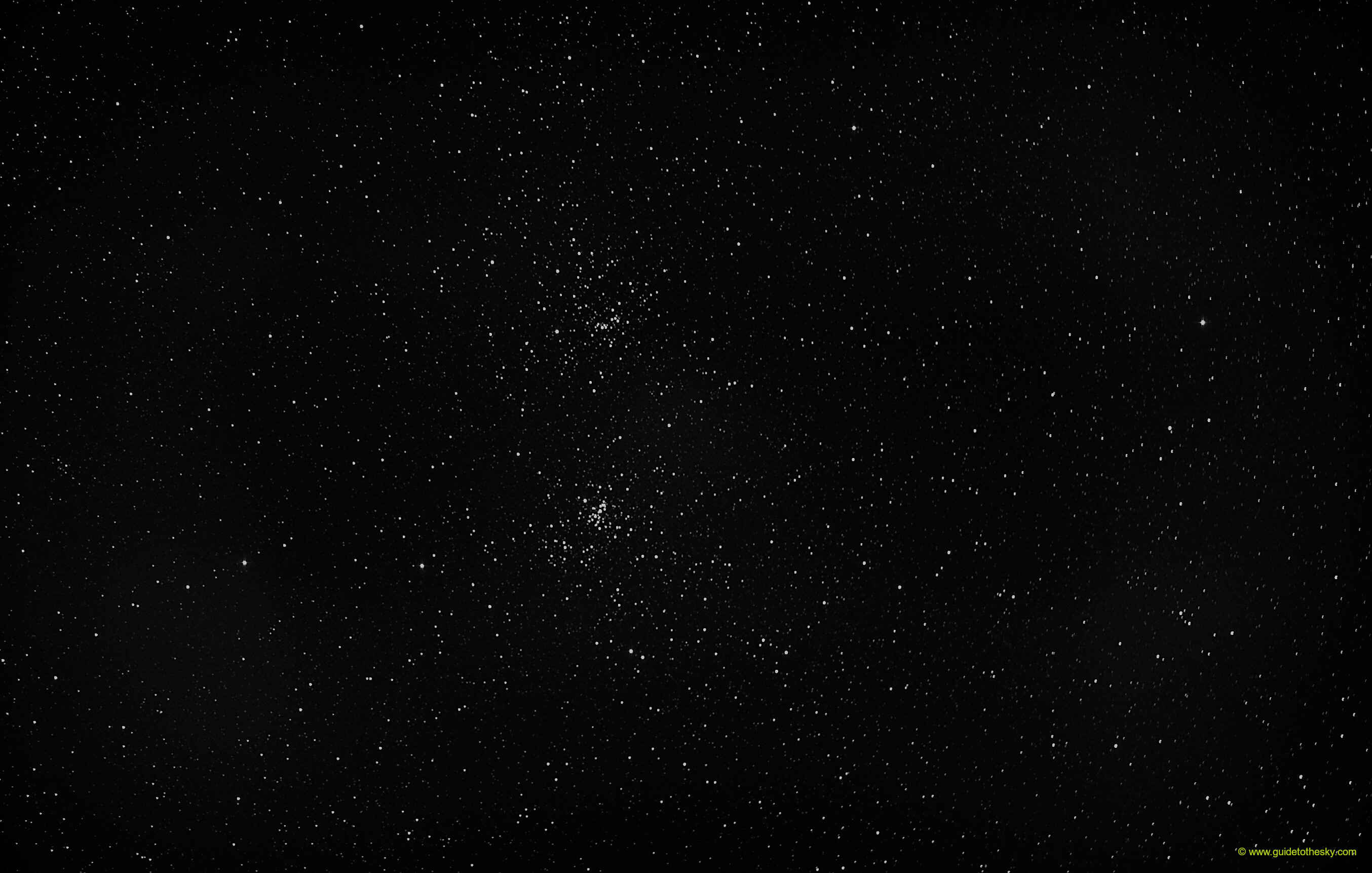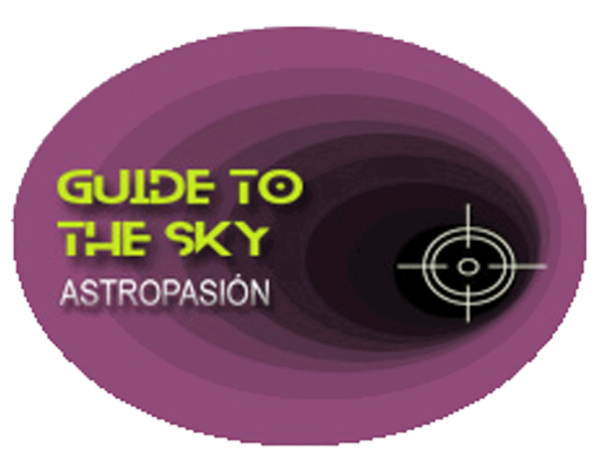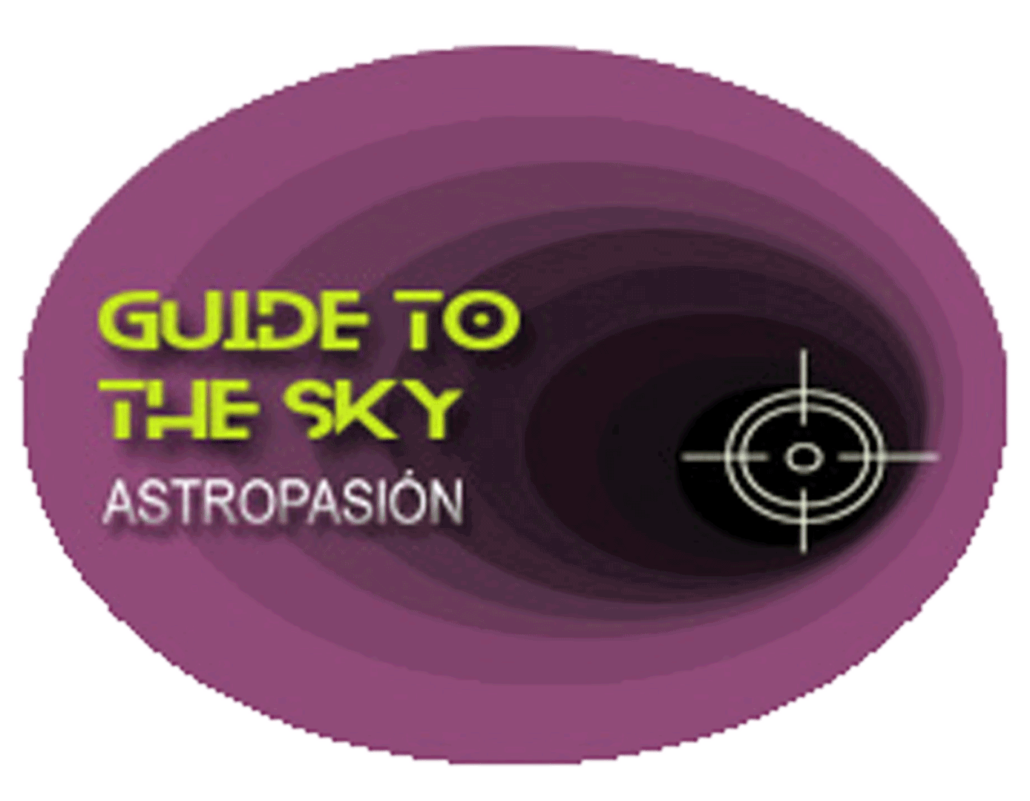NGC 869 - Perseus

Es el más brillante de los dos, aunque sorprendentemente lejano, las últimas mediciones indican que brilla desde {{ object[0].NGC869.mesDistances[0].dist }} {{ object[0].NGC869.mesDistances[0].unit }} de distancia.
¿Están los dos unidos gravitacionalmente? Todo parece indicar que así es. Las mediciones indican que NGC884 estaría algo más alejado de nosotros que su compañero. Tal diferencia podría ser mayor de 300 años luz!
La observación o la fotografía de ambos cúmulos es espectacular, las estrellas se acumulan en el centro de ambos cúmulos, tanto que, incluso en fotografías es dificil contar su número.
El cúmulo doble de Perseo también está en una zona rica en estrellas pues se ubica en el recorrido de La Vía Láctea.
NGC869 - Cúmulo doble de Perseo - W - en la IA
NGC 869 is one half of a beautiful double open cluster in the constellation Perseus, also known as h Persei. It's a prominent and well-studied object, often paired with its companion cluster, NGC 884 (χ Persei). Here's a breakdown of its key features:
-
Type: Open Cluster
-
Constellation: Perseus
-
Distance: Roughly 7,600 light-years from Earth. Both NGC 869 and NGC 884 are at about the same distance.
-
Age: Estimated to be around 13 million years old, making it a relatively young cluster.
-
Diameter: Spans approximately 30 arcminutes in the sky, corresponding to about 68 light-years in physical size.
-
Notable Features:
- Bright Stars: Contains many hot, blue, luminous stars.
- Metal-rich: Compared to other open clusters, it is relatively rich in metals.
- Part of the Perseus OB1 Association: A larger stellar association sharing a common origin.
-
Visibility: NGC 869, along with NGC 884, is easily visible to the naked eye as a hazy patch of light under dark skies. Binoculars reveal the individual stars. Telescopes provide stunning views of the sparkling cluster, resolved into numerous bright stars.
-
Significance: Double open clusters like NGC 869 and NGC 884 are important for studying stellar evolution and cluster dynamics. The fact that they are co-located and have similar properties suggests they formed in the same region of space at about the same time. Studying their stellar populations helps astronomers understand the process of star formation and the evolution of massive stars.
In summary, NGC 869 is a visually stunning and scientifically valuable open cluster that is a favorite target for amateur astronomers and a subject of ongoing research.
Más información sobre NGC 869 en NASA/IPAC.
Mapa alrededor de NGC 869
Otros identificadores de NGC869:
"C 0215+569" ,"NGC 869" ,"OCISM 84" ,"OCl 350.0" ,"OCl 350" ,"Raab 9" ,"[KPR2004b] 29" ,"NAME h Per Cluster" ,"Cl Collinder 24" ,"Cl Melotte 13" ,"NAME h Persei Cluster","[KPS2012] MWSC 0175" ,

